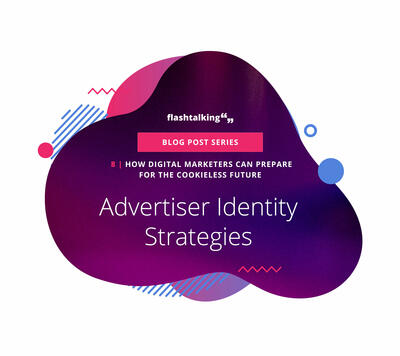


Just as there is no single technology that can replace the cookie, there is no one-size-fits-all identity strategy template for advertisers to follow. The identity strategy you will pursue depends on your starting point, specifically:
The degree to which your company owns first-party data; and,
Your ability to activate that data across the digital ecosystem.
Viewed through this lens, identity strategies fall into one of three categories:
CATEGORY 1: OWNS RICH FIRST-PARTY DATA AND DEPLOYMENT MEANS
Companies like online retailers not only own rich first-party data assets, but they also have strong digital footprints (e.g. registered websites and apps) that enable them to connect with consumers directly. For these companies, identity is all about orchestration: how they centralize, manage and deploy their first-party data in a privacy-compliant way.
The focus for these companies is to lay the ad tech infrastructure to transport and store their first-party data in a privacy-compliant way, and one that can adapt alongside the evolving Identityscape.
CATEGORY 2: OWNS RICH FIRST-PARTY DATA BUT LACKS DEPLOYMENT MEANS
These companies own significant first-party data assets but lack the ability to connect that data across their digital customer experiences. Financial services companies are prime examples. They know a tremendous amount about who their consumers are and what they do. However, to activate against that knowledge in digital channels, they must securely match their first-party data with other datasets and identity graphs.
The focus for companies in Category 2 is to work with partners that can provide an identifier with which to activate their vast stores of first-party data across the digital ecosystem. Given the resolution and scale issues, these companies should expect that multiple partners will be required with each being able to activate across their own swatch, “digital geography”, of the digital ecosystem.
CATEGORY 3: LACKS BOTH RICH FIRST-PARTY DATA AND DEPLOYMENT MEANS
Companies like CPG and auto advertisers neither own a robust set of first-party data assets nor have the digital footprints in which to deploy consumer insights they generate. Instead, they rely to a large extent on third parties for identity resolution and orchestration.
These companies will require concerted action on multiple fronts. Where possible, they should develop strategies to build their own first-party data assets—for example, by building branded digital storefronts. But with little first-party data available, they must also establish a network of partners with identifiers and high-value digital geographies that can be leveraged in the near term. Publishers represent a natural alliance.
Read the last blog post in this series, Part 7: Identity Building Block 3 - IDConnect. Our next and final blog post in the series, Part 9: How to Get Ahead of the Identity Curve, will provide a set of questions to help you get started down the path of building your Identity strategy.







